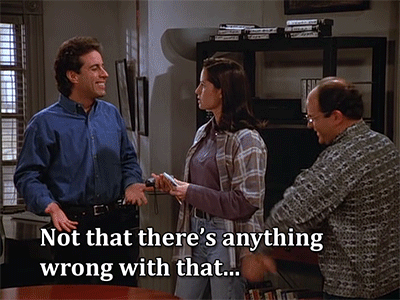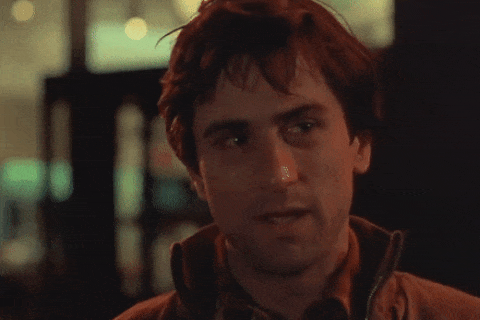The evil of the Fed is that we've placed everything in the hands of a class of people who can always inflict what they can never suffer.
Randal Quarles is a menace to society.
The title is a slight modification of a G.K. Chesterton quote.
"The United States economy is like a poker game where the chips have become concentrated in fewer and fewer hands, and where the other fellows can stay in the game only by borrowing. When their credit runs out the game will stop."
Marriner Eccles, Fed Chair 1934-1948
I was minding my own business, and then came across this article:
SVB’s Bankruptcy a 'Big Catalyst' for Utah-Based Investment Manager
The Cynosure Group's plans to build an RIA for wealthy clients got a fortuitous boost in the wake of Silicon Valley Bank’s downfall, even as its chairman has come under scrutiny for his role in the collapse.
Oh boy. So who is the chairman of Cynosure? (I knew the answer to this)
Why it’s Randal Quarles, former vice chair for supervision at the Federal Reserve (2017-2021)!
What a coincidence!
(In December 2020 I noted that Quarles co-founded Cynosure, which manages the Eccles family fortune, as in Marriner Eccles, who ran the Fed from 1934 to 1948. You may have heard of the Eccles Building. That’s the head office of the Fed’s 30,000 apparatchiks. Quarles's wife, Hope’s grandfather was Marriner S. Eccles' brother. It's a big, incestuous club.)
The Cynosure Group, a Utah-based asset manager of private equity and alternative investments, always planned to build out an RIA.
But the effort accelerated—almost overnight—thanks to the failed Silicon Valley Bank and the subsequent exodus of its wealth managers. Seven SVB advisors have joined Cynosure in recent weeks, where they make up the entirety of the new firm's advisor force and likely one of the largest concentrations of that bank's advisors to regather under one entity.
The failure of Silicon Valley Bank turned out to be quite fortuitous for Randy Quarles and Cynosure!
Here’s something interesting:
In 2018, Congress passed bipartisan legislation that eased the regulatory burden for smaller banks by repealing portions of the 2010 Dodd-Frank Act. The move in effect raised the asset level under which banks would come under closer federal supervision from $50 billion to $250 billion.
According to the regulatory watchdog organization Better Markets, the bill gave the Fed “broad discretion” to determine whether it should continue enforcing stronger oversight on banks with assets between $100 and $250 billion—the window where SVB fell at the time. Quarles, along with Fed Chair Jay Powell, used that discretion and withheld oversight of banks like SVB "far beyond what the law required and even beyond what some supporters of the law deemed appropriate," according to Better Markets. This move meant more stringent oversight of SVB was delayed until late 2021…
About a month ago, “the Fed released its own report on the crisis, written by Quarles' successor, specifically calling out the Fed's supervisory shortfalls that may have contributed to SVB’s downfall.” Heckuva job, Randy!
I’ve been writing about Quarles for a while.
Here’s Quarles’ 2021 Public Financial Disclosure Report. TL;DR: He’s loaded.
As friend of the show
wrote in 2020: Every Federal Reserve Board Member Is A Multi-MillionaireBut Quarles isn’t a mere millionaire:
“Randal Quarles, 62, is worth between $24.7 million and $125 million” (Love those government ranges).
And this was in 2020, so he’s likely worth $40 billion or something today, after all the bailouts from, well, you know, the place he worked until recently. Weird how that works.
But this is what really bugged me about multi-gazillionare nepotism-beneficiary wunderkind Randal Quarles:
What a slap in the face to 90% of America. Screw you, Randal Quarles.
Quarles is so rich it doesn't matter to him if inflation is 2% or 40% or 4000%.
So what exactly did Quarles do while Vice-Chair for Supervision at the Fed?
In his first 21 months on the job, Randal K. Quarles, the Federal Reserve’s vice chairman for supervision and regulation, met at least 22 times with partners at his former law firm, Davis Polk & Wardwell, which represents many of the nation’s largest banks.
Those meetings, disclosed in public schedules and other releases, suggest a closeness between America’s most important bank regulator and the industry he watches over. Mr. Quarles was a bank lawyer at Davis Polk in the 1980s and ’90s. At the Fed, he has conferred with former colleagues there, including Randall Guynn, a close friend. They at least occasionally came alongside officials of banks they represent, including Goldman Sachs, and trade groups including the Securities Industry and Financial Markets Association.
…He has talked with Davis Polk more often than other law firms, but executives from Goldman Sachs and JPMorgan have also met with him about 20 times each.
“I have a pretty open door”
Yep. A revolving one.
I love this:
Supervisors have little public accountability and wide discretion, which Mr. Quarles finds potentially problematic. At a Georgetown University event in September, he [Quarles] urged lawyers to look into whether banks are treated fairly.
OMG. Are banks treated fairly? Um, yeah, I’d say historically the biggest banks - the ones that pay Yellen $7.2 million for Zoom speeches over two years - yeah, they’ve been treated fairly.
Here’s an example of fair treatment.
Remember when you and your family got that big bonus for 2008, the same year you lost billions and had to have the taxpayers rescue your butt? Remember?
Any entity that is publicly backed - e.g., every bank listed above - should be highly regulated, and run like a boring utility.
You want to run a hedge fund? Go run a hedge fund (although honestly the Fed bails them out now too.)
And how much accountability do FOMC members really have for their repeatedly awful policies? Zip.
2019, Pre-Covid: Federal Reserve V.P. Grilled at House Hearing on Hundreds of Billions in Fed Loans to Wall Street
Hey Randal Quarles - why’d you guys bail hedge funds in September 2019?
“There were a complex set of factors that contributed to those events in September. Not all of them were related to our regulatory framework. But I do think that as we have considered what were the driving factors in the disruption in the repo market in September, we have identified some areas where our existing supervision of the regulatory framework, less the calibration or structure of the framework itself, may have created some incentives that were contributors.
“They were probably not the decisive contributors but they were contributors. And I think we need to examine them. Particularly among them are the internal liquidity stress tests that we run that create a preference, or can create a preference at some institutions, for central bank reserves over other liquid assets including Treasury securities for the satisfaction of their liquidity requirements under the liquidity framework that’s put in post the crisis.”
I’ll close with this from Congresswoman Ayanna Pressley:
Pressley: “Mr. Quarles, over the weekend the New York Times published a profile on your regulatory approach. And notably, you have chosen to spend your time in this role — in your first 21 months in office you met with Goldman Sachs 24 times; you met with JPMorgan 19 times; you met with Morgan Stanley 17 times; and with Citi[group] 12 times. In that same time frame, how many consumer groups did you meet with?”
Quarles: “Over the course of my first 21 months in office I met with approximately, at a conservative estimate, 15,000 to 20,000 people. The great majority of those – you’ve noted that 26 of those were Goldman Sachs [Congresswoman Pressley actually said 24 meetings were held with Goldman Sachs] out of 15 to 20,000 people, again at a conservative estimate, that’s 14/100ths of one percent of my time was spent with that and the other 99.86 percent of my time was spent with others.”















The stability of rules is the bedrock of peace. -Robert Breedlove.
If the rules are fluid, whoever makes the rules becomes the gamemaster. #endthefed
Hey Rudy, you are sorely missed on the WEF-moderated social platform formerly known as twitter.
Guess who else worked at Davis Polk? Yeah we know you know. "From 1981 to 1983, Powell was a lawyer with Davis Polk & Wardwell" A fish rots from the head...
Best regards,
Occupy The Fed